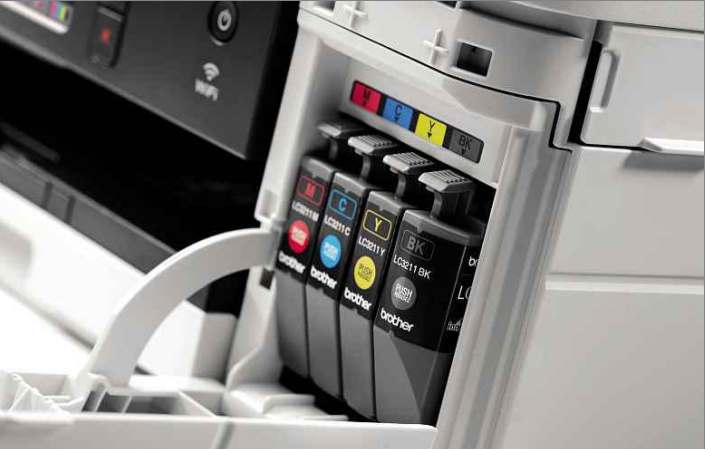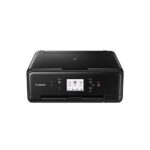Want a great printer for your home or small office? Here’s what to look for
This month we’ve focused on the kind of printers and multifunction printers (MFPs) that the discerning user might buy for a small office, or for creative or office use at home. There’s quite a spread, ranging from an inkjet up to a ruthlessly quick mono laser MFP, and each offers something different. We’ve assaulted each of them with a battery of tests, and picked four that stand out.
Table of Contents
What not to buy
If you walk into a big supermarket, you’ll be hit with a number of too-good-to-be-true specifications for a too-good-to-be-true price. The reason, of course, is that this is all too good to be true. You may have low upfront costs, but chances are that you’ll be restricted to low-capacity cartridges and the running costs will quickly ramp up. Our one-word advice? Avoid.
So how do you find your perfect printer or MFP? The first step is deciding between the two. Even if fax technology increasingly looks like something we made up to tease millennials, it’s a rare person indeed who will never want to scan or copy. These days a smartphone can help with both, but the results are usually better from an MFP – you should strongly consider one if you don’t already have a standalone scanner.
Colourful question
Nine of the 12 devices reviewed here can print and copy in colour, but three are based on mono laser printers. For some people, the lack of colour printing is a deal-breaker, but if you can live without it, mono lasers offer highly reliable, consistent and fast text. They’re the ideal choice if you’re printing lots of correspondence. If space and budget permit, you could even supplement a fast mono laser with a secondary inkjet, but it’s unlikely to be the best value approach (and adds the administrative burden of needing to keep two sets of toner and ink in stock).
When deciding on which type of device to buy, the final question is: laser or inkjet? Much will depend on what you’ll use it for, and personal preference, but make sure you challenge your preconceptions: laser printers aren’t automatically cheaper to run than an inkjet, for example, and they’re not always faster.
Case in point: the HP PageWide technology, on show here in the PageWide Pro 477dw. This hit almost 35 pages per minute (ppm) in mono, compared to the 19.5pmm of the Kyocera Ecosys P5o21cdw laser printer.

ABOVE Forget the upfront price – it’s the cost of replacement inks that really matters
Make sure you challenge your preconceptions: laser printers aren’t always cheaper to run than an inkjet, for example
A mini guide to printer and scanner terminology
Printers offer a minefield of abbreviations and weird words. Here’s our guide to what the most common ones mean
ADF – automatic document feeder, which sits atop the printer and feeds pages for automatic scanning
dpi -dots per inch, a measure of how granular a printer or scanner is
duplex-two-sided printing ipm – images per minute, a measure of scanning speed
MFP – multifunction printer, so typically one that can also scan and copy. Some MFPs can also fax
ppm – pages per minute, a measure of printing speed simplex- one-sided printing
TTFP – we’ll try to avoid this horrible abbreviation, but it stands for time to first page. It depends not only on the printer but the PC you’re using.
Similarly, the TTFP will vary depending on the complexity of the print
TWAIN – an application programming interface (API) that means third-party programs such as Adobe Photoshop can grab an image directly from the scanner
Find your features
Once you’ve decided on a type of device, think about how its features compare and which ones you actually need. A wired Ethernet connection is best if you want to share a device with the maximum speed and reliability, but in many cases a wireless connection will be fine (and means you can place the printer out of sight).
Think, too, about mundane things such as paper handling. Most of the devices here can automatically print on both sides of a sheet of paper, which can reduce waste and produce more professional looking results, but only HP’s PageWide Pro 477dw has a paper tray big enough to accept an entire ream. It’s also got long-lasting supplies, which should reduce the time you spend loading it up, ordering new ink and generally not being able to print. If you’re looking at MFPs, an automatic document feeder (ADF) can be invaluable for multi page scans, copies or faxes, but it’s a waste of money if you’re mostly interested in carefully scanning your old photos.
Finally, consider whether you need features such as a front panel memory card slot or USB port. Direct printing and scanning can be useful, particularly if you want to keep work confidential from colleagues, but home and small office inkjets can usually only print image files, not PDFs or other office documents.
Speed and costs
Speed isn’t everything, but it can be helpful if you’re sharing a device between several users. Manufacturer speed claims are usually taken from idealised conditions – our table and reviews tell you how fast prints, scans and copies really were.
The cost of owning a printer is often quite different to the cost of buying it in the first place. Running costs can make a cheap printer expensive, and turn a pricey one into
ABOVE Automatic document feeders are essential if you frequently copy multi page documents
How we test
Inkjet or laser, we put all printers and MFPs through a battery of tests, designed as much to bring out greatness as to uncover weaknesses. First off, we run untimed quality tests involving blocks of strong colour and regular patterns- the objective here is to show up uneven printing or inkjet colours that run into each other. We print a page of text in font sizes down to tiny 5pt, and use an eyeglass to scrutinise the results.
Next, we dust off the stopwatch and send the printer 25 pages of black text.
We time from the moment we click Print to the point when the first page arrives in the output tray, and continue until the last page is done to get both a time to first page (TTFP) and a pages per minute (ppm) figure for black text. For inkjets, we repeat the test in draft or fast mode, while on a laser we’ll repeat it from cold to assess warm-up time.
We then send a 24-page colour document of web, magazine pages and presentation slides to get a speed for colour (or, for mono printers, mono) graphics. On a colour laser, we get a TTFP, and again repeat it from cold. On duplex-capable printers, we print ten
ABOVE Along with all our printing tests, we scan a Kodak Q60 reference target at 600 dpi to check for colour accuracy and dynamic range
a bargain, but working out the true costs can be tricky. Our table also compares the cost of keeping each device in ink and toner. Where longer-lasting supplies such as fusers, belts or drums make a significant difference, we mention it in reviews.
Look at the figures and you’ll see that it’s impossible to generalise about whether lasers or inkjets are cheapest. Epson’s Expression Home XP-5100 and WorkForce WF-2860DWF share pages of this document onto five sheets of paper. Then we switch to a printer’s best quality setting, load up photo paper if necessary, and time two 10 x 8in photos and six 6x4in photos-the latter test is borderless on inkjets that support it.
For MFPs, we test copy speeds from standby, timing a single page and, where supported, ten pages from the ADF in both mono and colour. We use an imaging app to acquire images via TWAIN, timing from the moment we click Scan to the moment the image is complete and control is returned to the user. We time a preview, an A4 scan at 150 and 300 dpi, and a 6 x 4in photo at 600 and 1,200dpi. Then we capture a Kodak Q60 scan target (see image below) at 600dpi, which helps us spot strengths and problems with colour accuracy or dynamic range.
On top of these core tests, we use a power meter to measure consumption in sleep and standby modes, and the peak consumption when printing or (if supported) copying. We poke buttons, load up various paper feeds, try direct prints and scans, and fool around with mobile and cloud features. If we find problems, we’ll tell you about them.
The highest page costs, whereas another inkjet – HP’s PageWide Pro 477dw – has the lowest. It’s worth pointing out that laser and inkjet yields are calculated to different standards, and may both be sensitive to factors such as the number of pages in a typical job, and how long printers are left idle before jobs. For this reason, it’s best to treat running cost calculations as highly indicative, rather than exact.
